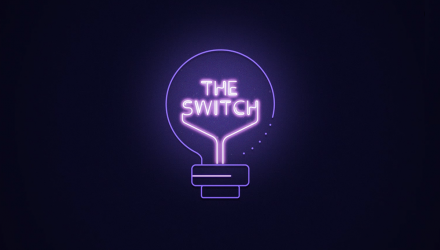This season of “The Switch” brings discussions about the mechanics of exchange traded funds. On this final episode of the second season, host Ren Leggi, Client Portfolio Manager for ARK Invest, and ETF Trends CEO Tom Lydon and CIO Dave Nadig discuss ETF liquidity.
Dave Nadig opens by explaining that one of the most important aspects of ETF investment is understanding the fundamentals of trading, as ETFs trade just like stocks on exchanges. Utilizing limit orders is the best piece of advice that he can give to investors because while ETFs typically trade fair value, they can fluctuate some in price. If an investor is using a market order, they may end up putting in a bid on an ETF at a time when its price isn’t optimal compared to its fair value.
“Look and see where an ETF is trading, put a limit order right around where it’s trading, and generally you’re going to be fine,” Nadig said.
Lydon points out that the tools are already built into the platform for investors using online methods through a brokerage platform, and that limit orders can be placed between the bid-and-ask spread. Worst case scenario, particularly as an advisor, is to call the trading desk and ask for clarification or help.
A benefit to using larger firms such as ARK is that they work with market makers to get a price at NAV (net asset value) through unit creation, a process that helps immensely when purchasing ETFs in bulk, said Leggi.
ETF Liquidity Benefits
Moving on to discuss the nature of liquidity for ETFs, Nadig explains that ETFs have two inherent types of liquidity: they have liquidity in the sense that stocks have liquidity, in how they trade and how you can purchase them on exchange; but then ETFs also have the liquidity of their underlying securities as well.
When considering the liquidity carried within ETFs, Leggi said that “anything can happen in the markets where we see a spike in volatility, and it actually changes the dynamics,” and that looking at an ETF at any given time is just a point in time for it.
By approaching investing in a way that isn’t based on traditional approaches, ARK can be flexible and respond to shifting dynamics. One example Leggi gives is the recent concerns of Covid-19 resurgence and how it has affected markets and ARK’s ability to respond to changing volatility.
“We are a longer-term investor, so we only trade by liquidity in many cases. We’re only trading when we have to; we’re not necessarily trading for the sake of trading. We’re not forced to rebalance our portfolio every week, every month” as active managers, Leggi said.
Regarding the authorized participants (APs), their job is a vital part of the process as they ensure that prices and spreads are as close to NAV as possible. This mainly comes into play for firms such as ARK who are global traders, trading across market caps and markets. Having APs that stay on top of arbitrage, the small, often penny differences between identical assets in different markets, allows the asset managers to focus on portfolio management.
A final benefit to ETF liquidity is that investors are never locked into their investments with ETFs. “Even if there is a crisis, you can get it out, but it will cost you something. You may have to trade at a discount to NAV, but you will be able to get out of a single ETF,” Leggi said, compared to mutual funds where you are locked into the fund until the end of the day. What’s more, investors will always know the price that they are selling at or buying into with ETFs, whereas with mutual funds, it’s a roll of the dice to see where the price settles at closing.
“That certainly gives investors some comfort. Being able to get in and out, same day is a huge plus,” Leggi said.
For more episodes, check out The Switch Video Series playlist.
For more news, information, and strategy, visit the Disruptive Technology Channel.

